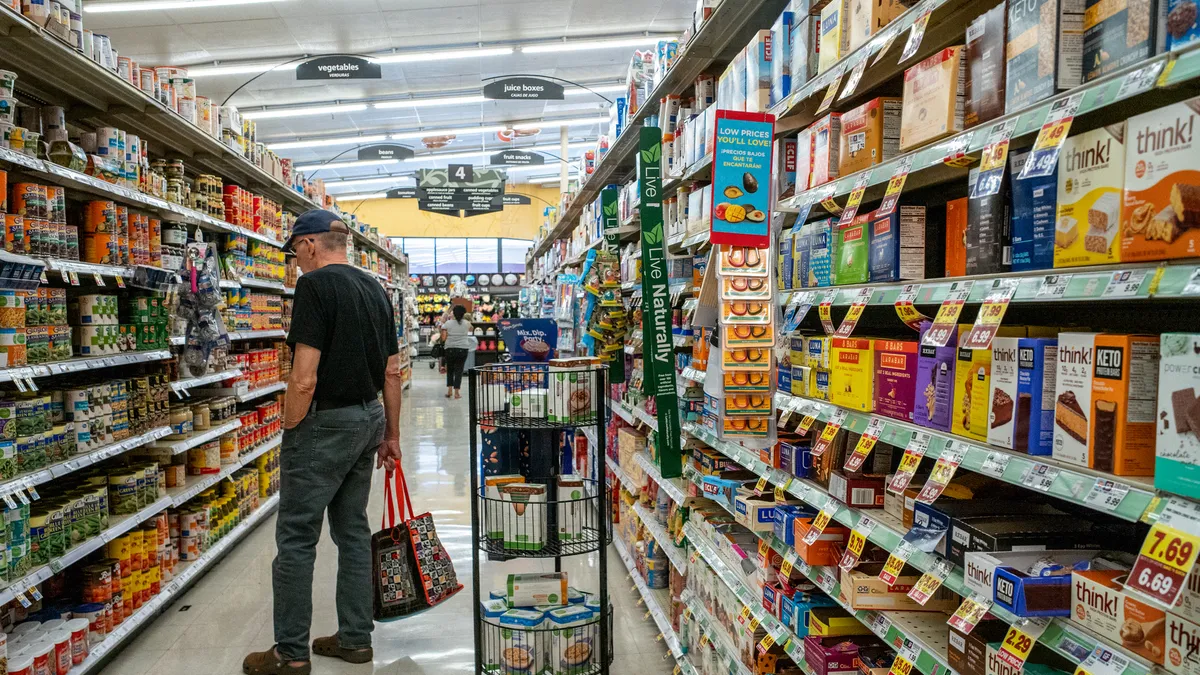In-store retail media technology has been all the rage this year, but it’s not always an affordable investment, especially for smaller independent and regional grocers.
Supermarkets don’t come pre-equipped with sampling kiosks, digital end caps and cooler door screens — but most do have a working PA system, and that may be all they need to start.
In-store audio can be integrated into a store’s existing infrastructure, making it a low-lift, inexpensive and fast path to market for smaller grocery players, Nick Larkins, co-founder and chief product officer of AI audio platform Qsic, said in an interview. Deploying in-store audio has a higher ROI than digital screens, he added, noting that even if a store doesn’t already have the framework to support audio, it’s cheaper to install than screens.
Founded in 2012 in Australia, Qsic recently expanded operations in the U.S. with the opening this summer of a second stateside office, in Dallas. The company serves as a partner and retail media provider focused solely on in-store audio integration in retail locations, including grocery stores.
Like in-store signage, music and intercom announcements are standard in supermarkets and now retailers and advertisers are beginning to view these assets as measurable retail media avenues. But crafting effective audio ads and getting the best return on them is something companies are still figuring out.
Making the most of sound
While shopper recall of audio ads is high, and people can absorb audio messaging passively, perfecting in-store audio just requires some fine-tuning and balance, according to Qsic CEO and co-founder Matthew Elsley.
Volume can be problematic in stores without proper management. To avoid relying on an employee or store manager to be responsible for adjusting volume, Qsic uses automation to adjust the volume based on how busy a store is.
“If you can’t hear [the ad], what was the point of playing it?” Larkin said, adding that a Qsic analysis found an ad’s volume level can strongly sway campaign performance.
Making sure the ad plays at relevant times is also vital. According to Elsley, audio ads should not aim to create demand for a product but instead play into “natural demand curves” for shopper behavior. For example, when working with convenience chain partner 7-Eleven, Qsic timed coffee ads to play earlier in the day, when coffee sales and demand peak.
“If there’s naturally no demand for a product and you’re playing an ad for it, it doesn’t sell very well,” Elsley said.
Regional grocers, whose retail media networks aren’t as advanced as those operated by large players like Kroger and Walmart, have advantages with in-store audio by knowing their audience. An ad that speaks directly to a local audience or specific demographic will oftentimes perform better than nationwide campaigns that are “far more generic and could be talking to anyone,” Elsley said.
Even if an ad isn’t for a specific customer base, the more details included, the more effective it will be, he added. Audio ads calling attention to a specific location, promotion or even price will better grab shoppers’ attention, Elsley said.
Grocery has opportunities to create a curated shopping experience through in-store audio because, along with the tech’s ability to easily blanket a center store in engaging retail media, it can also be divided up by store section, Larkins said.
Larkins cautions retailers, however, about creating an overstimulating environment and instead focusing on a store’s isolated zones, like deli counters and liquor rooms, for specific audio clips.
While audio is effective on its own, it’s most impactful when paired with in-store screens and signage, Qsic’s co-founders said. An ad on a digital screen with audio has a 50% higher shopper recognition than an ad played on a screen without audio or through audio alone, Elsley said, noting that Qisc has partnerships with other retail media companies.
“Whether it’s a machine doing it or an ad server that’s delivering the message [in-store audio] is a really personalized, contextual way that makes [the store experience] feel kind of local,” Larkin said.













